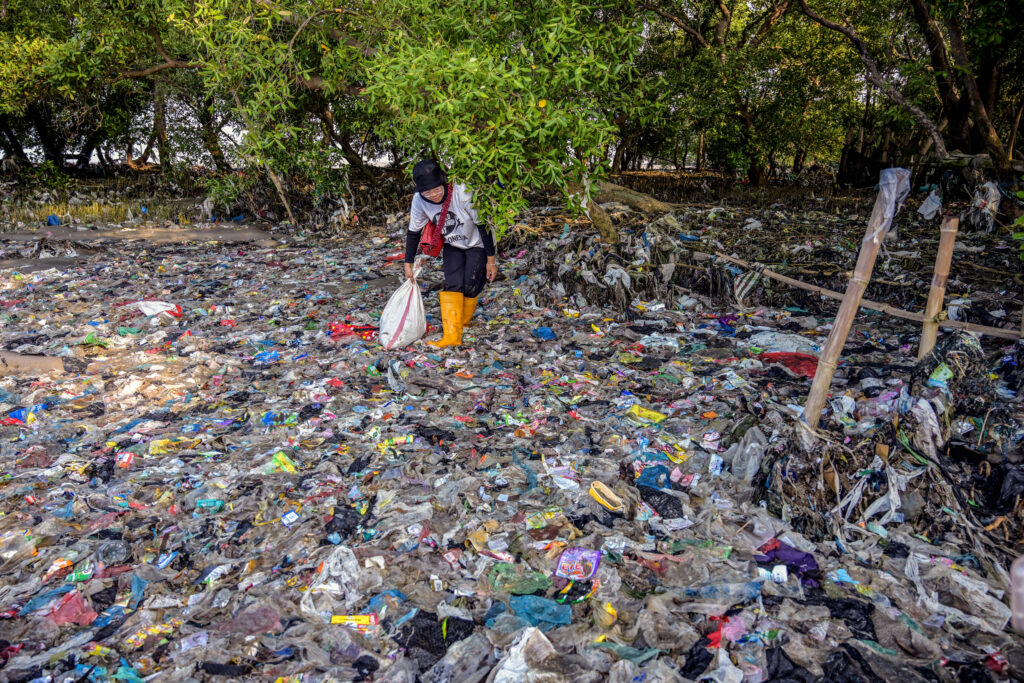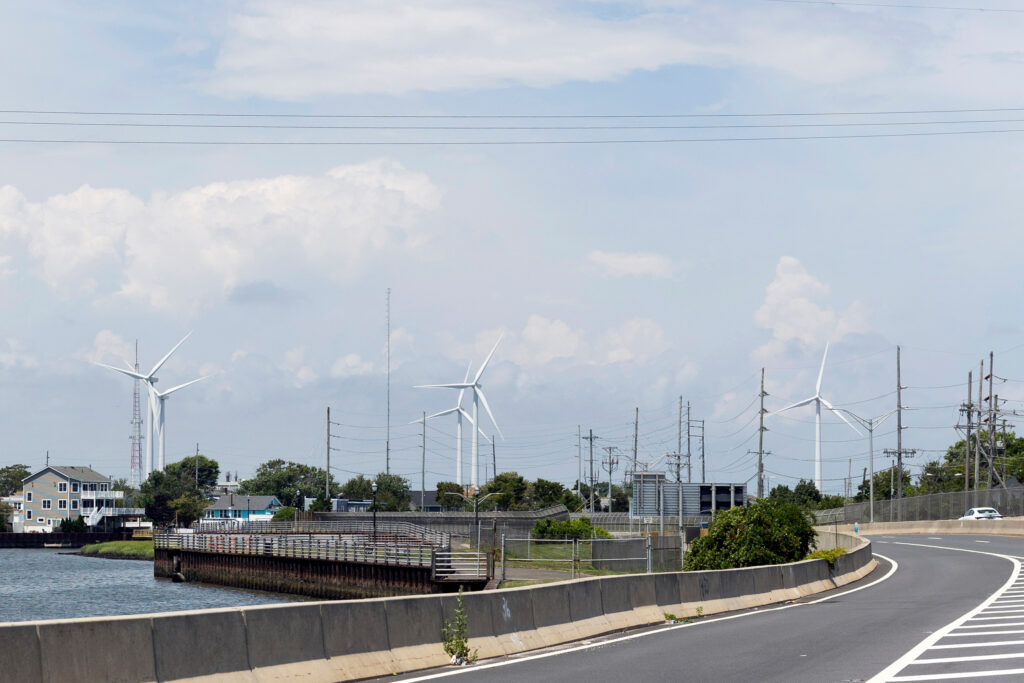The question of what to do with the vast quantities of toxic wastewater from oil and gas drilling in New Mexico is up for debate.
At stake are billions of gallons of wastewater generated annually in New Mexico, an arid state facing water shortages in the coming decades. Injecting the wastewater, known as produced water, underground has been linked to earthquakes.
Everyone agrees that can’t be the only disposal method. Some produced water is recycled for oil drilling. But no one quite agrees on what else could be done with the water, which can be five to eight times saltier than ocean water and often laced with fracking chemicals, hazardous compounds such as arsenic and organic compounds, particularly benzene, toluene, ethylbenzene and xylenes.
Is reusing treated produced water the answer to New Mexico’s water shortages? Or is it a threat to the state’s watersheds and public health? Both arguments were aired in a public hearing last month.
We’re hiring!
Please take a look at the new openings in our newsroom.
See jobs
New Mexico regulators presented a proposed rule for reusing produced water outside of the oilfields. The proposal prohibits discharging treated produced water into bodies of water but would allow for reuse in industrial processes, such as hydrogen production.
New Mexico Environmental Department (NMED) experts say there is not enough data to prove that discharges of treated produced water can be safe. Oil and gas industry advocates say the rule is too restrictive and will drive companies from New Mexico to Texas. Meanwhile environmental advocates are opposed to using the water for industry.
The Texas Commission on Environmental Quality began permitting produced water discharges statewide last year with little fanfare. States including Colorado and Wyoming also allow discharges. But in New Mexico, where water supplies are stretched thin, regulators are not convinced discharges can be safe.
“The science regarding treatment of produced water is just not there yet,” NMED assistant general counsel Andrew Knight said during the hearing. “The scientific research that would allow us to protectively permit treated produced water discharge simply does not exist.”
NMED’s Water Quality Control Commission heard testimony from environmental organizations and the oil and gas industry the week of May 13. After five days, the hearing was still not complete. Deliberations resume July 1 in Santa Fe; NMED expects to adopt the final rule in late 2024 or early 2025.
Drawing a Line
New Mexico’s crude oil production has steadily climbed since 2010 and now trails only Texas. In 2023, New Mexico produced a record high of 667 million barrels of crude oil, mostly in the Permian Basin.
The record output has an unpleasant side effect: billions of barrels of produced water that comes up during drilling. In 2022, drilling in New Mexico’s Delaware Basin (part of the Permian Basin) generated two billion barrels of produced water, according to NMED.
Much of this water is injected back underground in 741 active disposal wells around the state. Produced water is also transported to Texas for disposal. NMED environmental scientist Jennifer Fullam testified that restrictions on disposal wells following earthquakes has led to an “excess of produced water” in New Mexico.
Meanwhile, New Mexico officials are raising the alarm that the state must expand and diversify its water supply. The state water plan projects that in the next 50 years, water levels in rivers and aquifers could decrease by 25 percent and the state could have a shortage of 750,000 acre feet of water, the equivalent of over 244 billion gallons.
Governor Michelle Lujan Grisham proposed a Strategic Water Supply in December 2023, a program through which the state would purchase treated brackish water from water wells and treated produced water from oil and gas drilling and then make the water available for green hydrogen and manufacturing.
NMED’s proposed rule would allow treated produced water to be used in industrial processes, including hydrogen production, chemical manufacturing or power plant cooling. The rule also proposes ongoing demonstration, or pilot, projects to study produced water and treatment processes. This would build on the work of the New Mexico Produced Water Consortium based at New Mexico State University.

Where NMED experts drew a line is discharging treated produced water into surface water. They argued that there isn’t yet enough data on the quality of produced water and treatment. They referenced a 2020 paper that found many constituents in produced water do not have standard analytical methods or toxicity data, key components to develop science-based regulatory standards.
“At present there are just too many unknowns to allow the Department to propose standards or specific permit conditions to permit any discharge of produced water,” NMED’s Knight said. “At this point we couldn’t even tell you what testing would be needed.”
NMED scientist Lei Hu emphasized the risk of radium in produced water, which he said can be found in levels 100 times higher than what is allowed in public drinking water. He also mentioned the chemical additives used in fracking that can come back up to the surface. These additives are “not fully disclosed due to proprietary or trade secrets,” according to Hu, and identifying these substances “presents a challenge.”
While the proposed rule prohibits discharges of produced water, NMED stopped short of banning reuse altogether. NMED wrote in its filings that the rule aims to “provide protections for surface and groundwater… while fostering produced water and potable water research.”
Oil and Gas Industry, NMED Disagree on Key Points
The proposed rule provoked vigorous debate in Santa Fe. The hearing resembled an evidentiary trial: thousands of pages of evidence were filed and lawyers cross-examined witnesses. Dozens of people provided public comment, most speaking in opposition to produced water discharges or other forms of re-use.
The New Mexico Oil and Gas Association (NMOGA) and numerous environmental organizations participated as parties to the hearing. Each group presented written briefs and oral testimony laying out their positions on the proposed rule.
Existing research on produced water and the New Mexico Produced Water Consortium pilot projects went under the microscope. NMED stated that there is “limited data” from the pilot projects and “even less data” that characterizes the constituents in produced water. To date, there is only one peer-reviewed paper on the constituents in produced water in the New Mexico Permian Basin.
Consortium director Mike Hightower, a self-described “pro-produced water treatment and re-use advocate,” acknowledged in an interview that the Consortium has not yet provided all the data that NMED requested. He said the Consortium will be providing results of more pilot projects soon. “Part of the holdup is making sure that all the data is peer reviewed,” he said.
Industry groups, including NMOGA, argued the proposed rule is too restrictive. NMOGA expert witnesses said that concerns about produced water could just as easily apply to domestic wastewater, which contains pharmaceuticals and other contaminants. A NMOGA witness testified that “there is simply no justification for treating produced water differently” from domestic wastewater.
However, NMED spelled out that the existing treatment standards for domestic wastewater and drinking water are not apt comparisons for treating produced water. The agency wrote that the possible range of contaminants in domestic wastewater are known. But produced water can come from “various locations, with varying quality, constituents, and concentrations.” This means the treatment process will have to be highly specific and site dependent.
NMOGA witnesses pointed to other states that allow produced water discharge to argue that New Mexico should too. But NMED witnesses and environmental organizations countered that there is scant scientific research on the effects of these discharges.
NMOGA did not respond to requests for comment.
Some See Opportunity in Produced Water, While Others See a Threat
Attorney Tannis Fox of the Western Environmental Law Center, who represents Amigos Bravos and the Sierra Club in the proceedings, said the prohibition of discharges is “critically important.” But she still has major concerns about the rule.
The groups she represents oppose using treated produced water at industrial facilities because of the risk of spills or accidents and worker safety. She said reuse technologies “are not ready for prime time.”
Center for Biological Diversity attorney Colin Cox said New Mexico residents think that the state purchasing treated produced water, as the governor proposed, would amount to a subsidy for the oil and gas industry as it faces disposal problems. He said the provisions for industrial use of produced water seemed “shoe-horned in” and “half baked.”
“[NMED’s] own scientists say this stuff is not ready… we don’t even have the science to characterize this water,” Cox said. “And they’re ready to go forward with full-scale industrial re-use in the rule?”
“If this doesn’t go well in New Mexico, people are just going to send that water to Texas.”
But others think New Mexico is being too cautious. Industry scientist Zachariah Hildenbrand said the proposed rule is “going backwards.” He is the chief scientific officer at Infinity Water Solutions, which provides water recycling services in the Texas Permian Basin and has announced plans to expand to New Mexico. Hildenbrand attended some of the hearing but did not provide testimony.
“If this doesn’t go well in New Mexico, people are just going to send that water to Texas,” he said. “And New Mexico is going to miss out on this opportunity of transforming this waste stream into a resource.”
Hildenbrand said research he conducted at the University of Texas, El Paso found produced water can be treated and desalinated to be “cleaner than drinking water.” His work has not yet been published in a peer-reviewed journal.
“We’re at a point where energy production needs an additional route to manage these volumes and we need this now,” Hildenbrand said. “I’m not advocating doing anything hastily but I am conveying that there is a certain sense of urgency.”
This story is funded by readers like you.
Our nonprofit newsroom provides award-winning climate coverage free of charge and advertising. We rely on donations from readers like you to keep going. Please donate now to support our work.
Donate Now
Hightower, of the Consortium, said that treating produced water could be a viable alternative for New Mexico communities that are running low on water.
“The state needs the water. And this is the quickest way to get new water supplies,” Hightower said. “We have a reason to not put this on the back burner and wait for 10 years.”
Many people who provided public comment opposed reuse of the water outside the oilfields. “No industry in the U.S. is allowed as much latitude in their waste disposal as oil and gas,” wrote Don and Jane Schreiber, ranchers who live in the San Juan Basin. “Force operators to dispose of their waste without polluting our surface or our water.”
While some call for urgency, New Mexico regulators are sticking to the scrupulous rule-making process and taking a more precautionary approach than states like Texas and Wyoming. By next year, New Mexico will stake its official position on what to do with all that produced water.


















